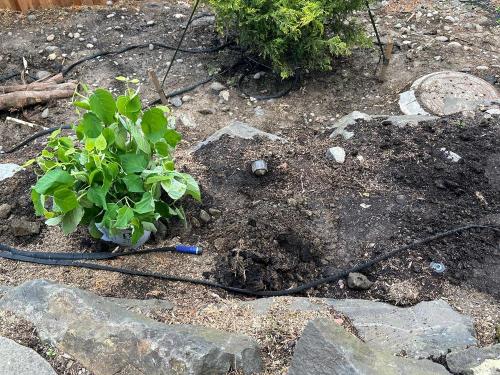Welcome to NGA. Cultivars of Hydrangea arborescens, including those that are part of the Incrediball and Invincibelle Collections, typically have a shallow root system so their tiny roots tend to spread out rather than grow deeply. In general, the roots of most hydrangea varieties, including H. arborescens, extend just below the soil surface, reaching a depth of about 12 to 18 inches at maturity. It is possible to plant by a retaining wall but it also depends on how many rocks you encounter.
Soil with a very high concentration of rocks can indeed present challenges so consider proceeding with caution. If the rocks are large and densely packed, they can hinder water movement through the soil, leading to poor drainage. Hydrangeas generally prefer well-draining soil to prevent root rot and other water-related issues. Rocks can also create physical barriers, limiting root growth and potentially causing the roots to become crowded or deformed.
But you have some options to counter act these challenges: your cultivar has an estimated size at maturity of 5 to 6 feet so consider planting away from the start of the retaining wall; prior to planting, consider amending rocky soil with organic matter such as compost or aged manure to improve soil structure, drainage, and nutrient availability; also consider planting the hydrangea in a raised bed about 12-18 inches high; since rocks can interfere with the availability of nutrients, consider applying a layer of mulch around the base of the hydrangea to minimize any deficiencies as the mulch decays and provides nutrients.
Note: some rocks like limestone, chalk and marble can leech lime so also consider monitoring the foliage for interveinal leaf yellowing in your normally acidic environment of Portland.
